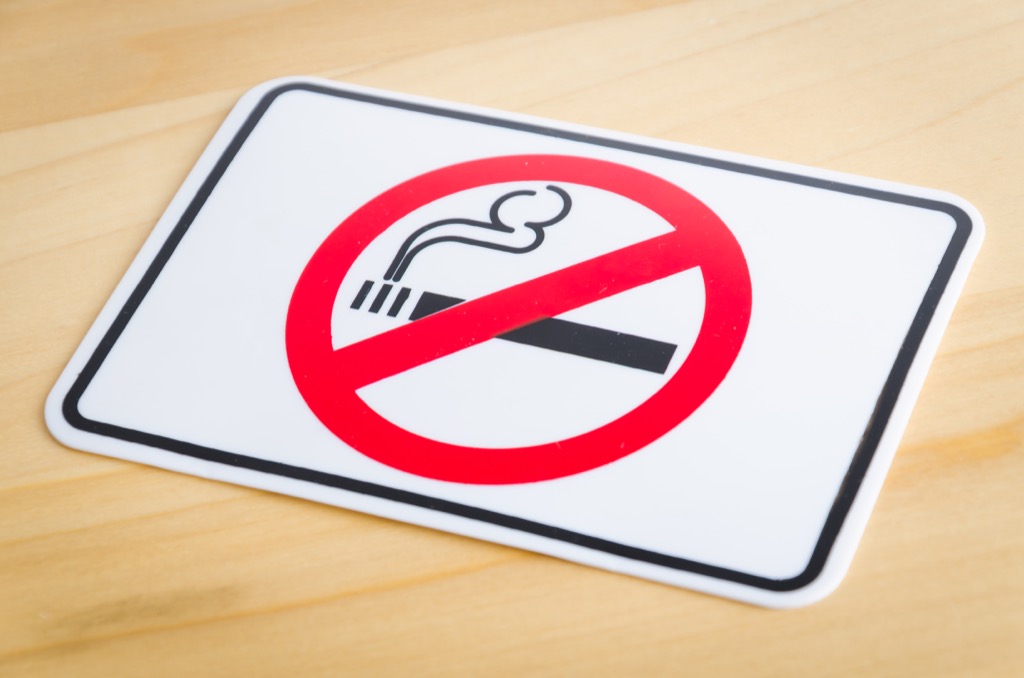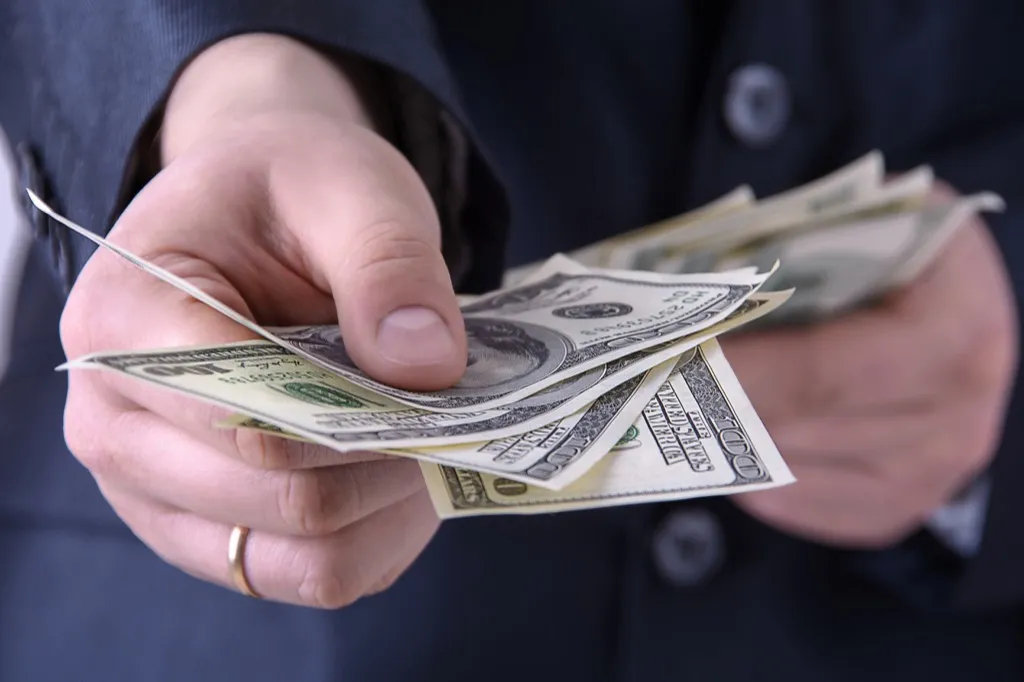25 Things That Were Considered Scandalous 100 Years Ago But Are Totally Normal Now

Human beings have come a long way in the last 100 years. Sure, we managed to beat Hitler, plant a flag on the moon, and invent that whole Internet thing, but we accomplished other things, too. For instance, did you know that we got over our collective fear of seeing women wearing pants? It’s true! Also, we finally learned that tomatoes aren’t “poison apples,” cleaning ourselves on a daily basis wasn’t so bad, and those newfangled “horseless carriages” might not be a passing fad, after all. And that’s just the beginning. Here are 25 things that humans found to be scandalous or outré a century ago that are completely normal today. And for an even closer look at how quickly things change, here are 20 Present-Day Facts No One Could Have Predicted Five Years Ago.
1
Reading in bed

Is there anything more soothing than curling up in bed with a good book at the end of the day? Not according to an 1832 editorial in The Family Monitor, which called bedside reading “little less than tempting God, to sport with the most awful danger and calamity which can affect ourselves and others.” It likely had something to do with candles, which had a tendency to set a sleepy reader ablaze. Now for more blasts from the past, read about the 9 Times Politicians Totally Lost It and Things Got Physical.
2
Speeding

Like Tom Cruise in Top Gun, we all feel the “need for speed.” But the lust to reach dangerous and ill-advised speeds for a thrill is a fairly new impulse. The world’s first speeding ticket, given to a speed-devil Ohio motorist in 1904, was for going a mere 12 miles per hour. Some people were so terrified of machines propelling us forward at mild speeds that they predicted it could result in everything from immediate asphyxiation to a moral and intellectual decline. “Veracious people will turn into the most immeasurable liars,” one anxious anti-train zealot wrote in an 1830 op-ed. “All their conceptions will be exaggerated by their magnificent notions of distance.” But since speeding is still illegal, make sure you know the 10 Ways to Speed Without Getting a Ticket.
3
Women in pants

In Gold Rush-era San Francisco, a woman in pants had to lobby her local alderman for permission to not be arrested for not dressing like a prostitute or maid. So yeah, it was frowned upon. The first women’s trouser was introduced in 1918, with the ridiculous name “Freedom-Alls.” They included a belted tunic over harem pants. So basically, the costume of a very uncomfortable lady genie. Ironically, we may have come full circle: harem pants are currently one of the 40 Things No Woman Over 40 Should Own.
4
Teenagers with cars

These days, the biggest concern about teenagers and cars is that they might be tempted to text and drive, thus killing themselves. But back in the 1920s, a teenager with a car could mean only one thing: They want to bone your daughter. While we’re on the subject of cars, check out The Best New Cars for 2018.
5
Using an umbrella

When a British wool merchant named Jonas Hanway tried to walk the streets of London in the mid-18th century with an umbrella, stunned onlookers “would pelt him with rubbish” and even tried to run him over with their cars. He’s still remembered by some history books as “the courageous citizen who first carried an umbrella.” However, these days an umbrella is an essential part of The Rain Gear Every Man Needs.
6
Electricity

In the early 20th century, many people’s first exposure to electricity was Thomas Edison electrocuting an elephant. So forgive them if they weren’t super-excited about filling their homes with the stuff. Even if they didn’t think their family would be fried like an egg, there were other concerns. “If you electrify homes you will make women and children and vulnerable,” claimed one naysayer. “Predators will be able to tell if they are home because the light will be on, and you will be able to see them.” If there’s anything worse than a home invasion while being electrocuted, we’d like to hear it.
7
Sending children to school

In 1900, only about half of all U.S. kids between the ages of five and 19-year-olds were enrolled in any kind of school, and those who did show up usually dropped out around the eighth grade. Resentment about compulsory education had been festering for awhile. One Democratic representative from Iowa grumbled in 1876 that forcing kids to go to school was “anti-American, anti-Republican, anti-Democratic. … It may do in a Monarchy where all is force and compulsory, but in a free society… it is unjust, wrong and .. . unconstitutional.” And speaking of school: if you’re rocking the schoolyard backpack look, here’s how to know whether to single-strap or double-strap it.
8
Singing the National Anthem before a sporting event

The “Star-Spangled Banner” didn’t become our official National Anthem until 1931. If you stood up before a ballgame 100 years ago, it was just to get the hotdog vendor’s attention.
9
Drugs as anything but a solution to all your problems

Tell anybody 100 years ago that drugs like cocaine and heroin might not be the best substances to put inside your body, and they definitely wouldn’t agree with you. It wasn’t merely okay to do heroin, doctors were regularly prescribing it. It was an ingredient in cough syrup. As for cocaine, Sigmund Freud, a widely respected psychologist and neurologist, claimed it helped him with “depression and against indigestion and with the most brilliant of success.” While we’re on the subject of drugs, here are the 20 Craziest Side Effects of Over-the-Counter Drugs.
10
Lack of pubic hair

Aside from the Ancient Greeks and Romans, a bushy nether region has typically been the culturally accepted norm. It was such an accepted look that when prostitutes in 1450 had to shave for STD-reason they replaced the hair with used merkins (or lower-body “wigs”). Imagine what they’d think of modern women, 84% of whom remove some or all of their pubic hair? And while we’re on the subject: here is the New Grooming Tech You Need Right Now.
11
Tomatoes

During the late 1700s, tomatoes were dubbed “poison apples” because some aristocrats got lead poisoning while eating tomatoes on pewter plates—which were especially high in lead. But the reputation (though undeserved) stuck, and even 19th-century poet Ralph Waldo Emerson considered them (or at least the worms that purportedly lived in tomatoes) “an object of much terror, it being currently regarded as poisonous and imparting a poisonous quality to the fruit if it should chance to crawl upon it.” Now, of course, we know that tomatoes are one of the 25 Foods That’ll Keep You Young Forever.
12
Bikinis

When French inventor Louis Réard tried to introduce his latest fashion creation, the bikini—made from just 30 inches of fabric—he couldn’t find a single model willing to wear it in public. So he hired a 19-year-old stripper, for whom wearing anything at all was a career step up. Modern Girl magazine responded that it was “inconceivable that any girl with tact and decency would ever wear such a thing.” Fast forward to today, and you’ve got Instagram, quite possibly the world’s largest repository of bikini photos.
13
Horseless carriages

This newspaper ad from 1915 pretty much say it all. Compare the price of a harness with automobile tires, and the choice is obvious. What kind of dummy buys a car when a horse “will take you through snow and mud as well as on good roads and his carburetor is never out of order?” Now, if you’re in the market for a new set of wheels, here are The Best New Cars for 2018.
14
The color purple

No, not the 1985 movie starring Whoopi Goldberg. The actual color. A 1903 Boston Globe story, with the (presumably unironic) title “Colors That Will Drive the Brain to Madness,” pegged purple as “the most dangerous color there is.” Hold on, because it gets so much better. “If purple walls and a red tinted window surrounded you for a month with no color but purple around you, by the end of that time you would be a madman,” the author wrote. “No matter how strong your brain might be it would not stand the strain, and it is doubtful if you would ever recover your reason.”
15
Radiation (as something you shouldn’t consume)

Wait, wait, hold on a minute, you’re saying that radiation isn’t something you should put on your skin and drink like a health smoothie? Well, color everybody from 100 years ago embarrassed. Especially Eben Byers, a steel mogul who drank three bottles of radiation a day until his death, which was reported in a Wall Street Journal story from 1932 with the sublime headline “The Radium Water Worked Fine Until His Jaw Came Off.” And for more foods you should ingest, here are the 10 Best Foods for Your Heart.
16
Daily showers

A century ago, baths were a special occasion—the kind of thing you did on the weekends. (It was like “date night,” but with more loofahs.) Regular bathing didn’t become a thing until the mid-20th century, thanks to magazine ads for grooming products, with aggressive pitches like “There’s self-respect in SOAP & WATER.” Today, a matching towel set is one of The 40 Things Every Man Over 40 Should Own.
17
Coffee

You might think of coffee as a delicious morning beverage that keeps you alert and productive when you’d rather be sleeping. But to early 17th century Catholics it was a “bitter invention of Satan” and a “(delicious) devil’s drink.” Can’t we all be right? Now coffee is probably an inescapable part of your morning routine, so check out The 15 Best Coffee Makers on the Planet.
18
Bicycles

The problem with bicycles is that sometimes women insist on riding them. And then they forget to do things, like the bullet points outlined in this 1896 article. A woman on a bicycle should never coast (too dangerous), wear tight garters or heavy jewelry, refuse assistance from a man who’s felt pity for their dainty lady legs and wants to push them up a steep hill, or worst of all, makes a “bicycle face,” described as a “haggard, worried expression” in this 1895 newspaper story. And speaking of bikes, here are 17 Insanely Cool Luxury Bicycles.
19
Living to 100

In 1900, the average life expectancy for an American man was 48.3. And that was if he was lucky. Today, it’s around 78.7, and the chances of hitting 100 aren’t as laughably rare anymore. In just the last decade and a half, according to the Centers for Disease Control and Prevention, Americans living to 100 have increased by more than 43 percent. Becoming a Supercentenarian will always be amazing, but it no longer makes you look like a biblical character. Still, you should check out these 100 Ways to Live to 100.
20
Smoking bans

Even up to the 1950s and 60s, you could smoke pretty much anywhere. Restaurants, movie theaters, airplanes, even hospitals. The only places where cigarettes were frowned upon were elevators, churches, and high school classrooms (and you could probably smoke there too if you were nice about it.) If you told a smoker from 1917 that a hundred years in the future, nobody can smoke in bars anymore, he would be just slightly less alarmed than if you told him about a zombie apocalypse.
21
Public transportation

Those hanging straps on a subway that passengers can hold onto to keep from falling? According to this 1912 editorial in the Chicago Sunday Tribune, they could cause “a frightful strain upon [your] internal organs.”
22
Soda

Not because of the excessive sugar, or how soda consumption could lead to a 26% increased risk of developing type 2 diabetes. Soda was once considered dangerous because it turned women into harlots. Okay, fine, we’re paraphrasing. But when the US Food and Drug Administration seized forty barrels of Coca-Cola in 1911, they explained that the beverage was a danger to college girls, capable of causing “wild nocturnal freaks, violations of college rules and female proprieties, and even immoralities.” We’re a bit more enlightened now, and we know that cola ain’t great for different reasons. Chiefly, it’s one of The 40 Unhealthiest Foods if You’re Over 40.
23
Women with tattoos

At the beginning of the 20th century, tattoos “were associated with criminality and underground, seedy things,” says Anni Irish, a Brooklyn writer who has written extensively about the social history of tattooing in America. “It was tied to sailors, prostitution, and crime.” Unless a woman worked for the circus, or sold her body for money, getting inked just wasn’t socially acceptable. Well, it definitely is today. In fact, according to a Harris Poll, women with tattoos (23%) now outnumber men (19%). Before you get yourself inked though, consider that tattoos are one of The 7 Most Surprising Everyday Exercise Killers.
24
Making a five-figure salary with benefits

In 1915, the average salary for a U.S. worker was in the ballpark of $687 a year, according to Census Bureau data. That’s about $16,063 in modern dollars. Also, expecting your job to come with health benefits didn’t become typical until the 40s, when the IRS began offering tax breaks for employer-based health care. Try asking an employer in the early 1900s if “this job comes with dental,” and he would never have stopped laughing.
25
Dancing

Long before the movie Footloose warned of the dangers of dancing, The Washington Post reported on a girl, just 17 years-old, who died in 1926 after attempting the Charleston. According to her doctor, her untimely death was caused by the “extreme physical exercise” involved in all the kicking and hand gestures of a dance, which he warned was “particularly dangerous for young women.” How we haven’t lost a young woman yet to twerking is nothing short of a miracle.
For more amazing advice for living smarter, looking better, and feeling younger, follow us on Facebook now!